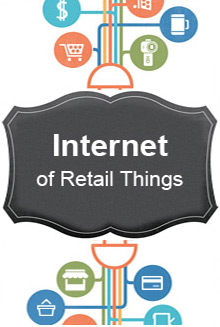As we know, IoT is all about gathering information, processing, applying analytics on cloud platform and creating a value out of it. It becomes necessary for any company identifying several transactions that IoT creates from the physical to virtual world right before investing plans, typically when companies don’t have any background about all the technologies involved in deploying end-to-end IoT solutions. Today, we will look at key areas where a company should specifically take notice while trying to invest in IoT enablement.
Early involvement of an IoT Service Provider
Early involvement of an IoT service provider can help ascertain the value which IoT can bring to an organization. IoT Service providers can assess the current scenario and help any company gain insight on what it takes to implement IoT and what value it can bring to them or their customers.
The choice of an IoT service provider should be made keeping in mind the engineering capabilities required for IoT enablement for an industry vertical. Primarily, there are seven core areas which are identified as strengths of an ideal IoT services provider:
# Consulting
# Connected Devices – Design and Development services or ecosystem partners
# Intelligent IoT Platform–Open platform and customization services
# Vertical Applications development services
# Integration Services
# Testing
# Managed Services
Investing in a commercial pilot project
Having set a fraction of budget aside for evaluating an IoT implementation is much advised as this will help an organization to successfully qualify on what makes business sense and at the same time will gain insights on the challenges they will face while scaling up the solutions and maintaining workflows. Companies can look out for investing in pay-per-use cloud model to conduct these pilot projects and deploying IoT Platform for pilot projects.
Build on what already works
Organization needs to understand what are the existing assets/processes/services which can be leveraged to build an IoT roadmap. This is also include integrating IoT solution with the existing devices or Applications. This will require understanding the company’s integration requirements for existing devices/applications as protocols and standards are currently fragmented and needs assessment before adoption.
Closely monitor technology shift
The developments in the digital trend are ever growing. Any company to start up with the ideology of creating a shift in their business models in terms of IoT and to build the strategy in terms of seamless integrity into the digital world, the first and foremost consideration is the awareness of the technology and standards. One needs to ponder upon , ‘how does this impact my business in a long run which will significantly change the value chain in a competitive advantage and be aware of what scenarios could create lock-out’.
Making Ecosystem partners
Since IoT is in the early stage of growth, there are a lot of risks involved. To gain a competitive advantage, the most economical way for growth in mutual aspects is by strategy alliance. This will prove to transfer the technology, develop advantage over competitor, gain new opportunity and expand, and even share the risks. The focus will be on the collaboration aspects and integration in terms of buying – selling powers and the notable time in decision making investment to develop effective alliance. Else, the organization will lose the flexibility for any quick action and the scope of project involved. The key is to carefully and collaboratively manage and balance the cross-cultural competencies.
Focus on potential values to the customer
IoT is all about connecting devices anywhere, anytime and generating value proposition. Serving the new forms of customer requires the effort from the company, and they vary from industry to application. Identifying the product development opportunities with the customer is one of the effective steps. The difference between the customers in IoT differ for different verticals and value which is created from Cost savings, improved asset utilization, efficient processes and improved productivity.
Published In: Info Techlead

is Associate Director – M2M/IoT Practice at Happiest Minds. He has 10+ years of extensive experience in the M2M / IoT Sector. He has been a key member in many multidisciplinary teams that were engaged in reform & ICT automation of various industry segment verticals such as Utilities (Smart Grid), Home & Industrial Automation, Security & Surveillance, Automotive / Logistics, BFSI, Consumer Products and others . His role involves technology road mapping, business development and consulting.




